What are the best digital pianos in 2025? I'm a professional piano and music gear reviewer and these are my top picks
With a decade of experience selling and reviewing pianos, these are what I believe to be the very best digital pianos from Yamaha, Roland, Casio, Kawai and Korg - covering all price points
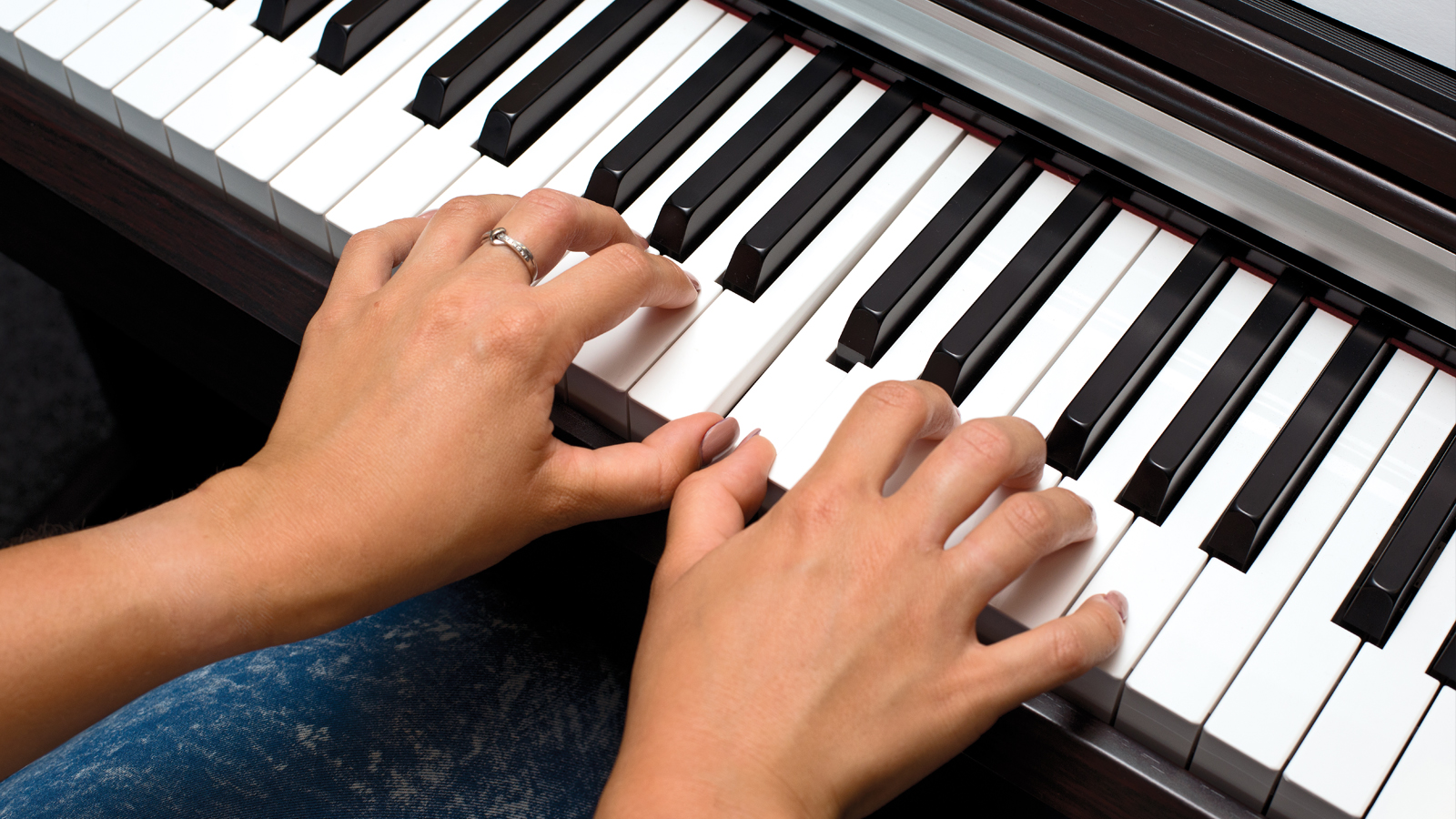
I think we're currently living in the golden age of digital pianos. The technology housed inside these digital instruments is getting better and better with every passing year, meaning the tone and feel - and in many cases, the aesthetic - are edging ever closer to their acoustic brethren. So, whether you're playing to accompany your own voice, performing a beautiful classical concerto, or setting the mood with smooth jazz, the best digital pianos really can do it all.
My name is Daryl, and I’ll be your guide through the wonderful world of digital pianos. I’m a former music retail manager, and I spent much of my 10 years in that part of the industry helping pair musicians with the ultimate digital piano. I have since shifted away from selling musical instruments and now use my years of experience writing for MusicRadar, reviewing the latest models and hand-crafting buyer's guides for the site.
My comprehensive guide will break down what I believe are the best digital pianos available right now in 2025, from high-end instruments that will take centre place in any room to small discrete pianos that won't take up too much space. If you're new to digital pianos, I have also included in-depth buying advice further down the guide to help you through the process of purchasing your first piano.
Our top picks

The groundbreaking 700 series features the latest technology developed by Yamaha to perfectly recreate the feel and sound of an acoustic piano and is easily one of our favourite pianos on the market.
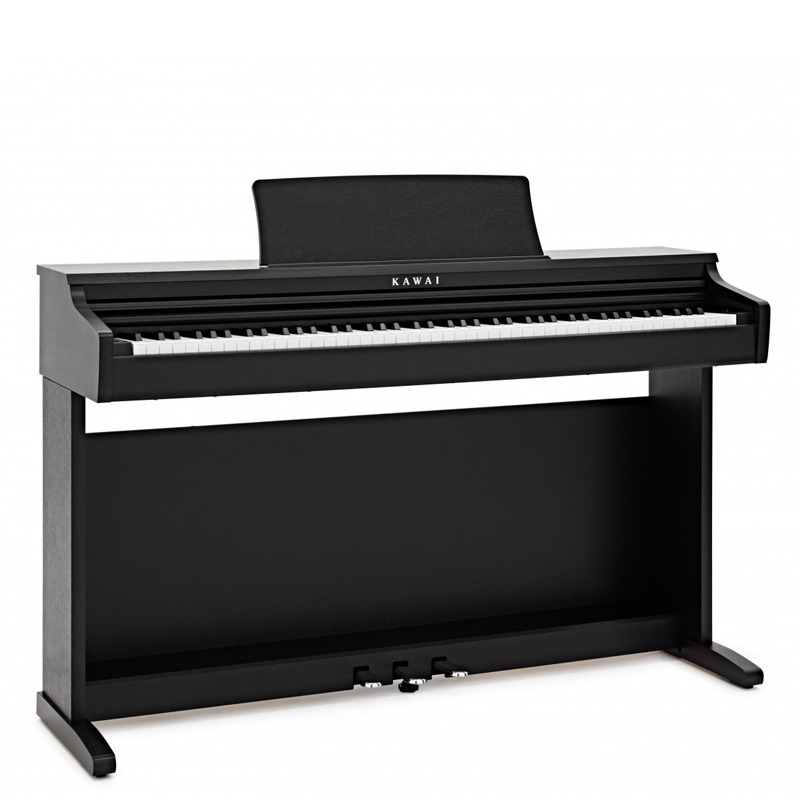
This sleek slimline digital piano is perfect for those looking to learn the piano but have limited space. The impressively small stature of the KDP120 still manages to deliver a rich, warm tone, mimicking the sound of the Shigeru Kawai SK-EX concert grand.
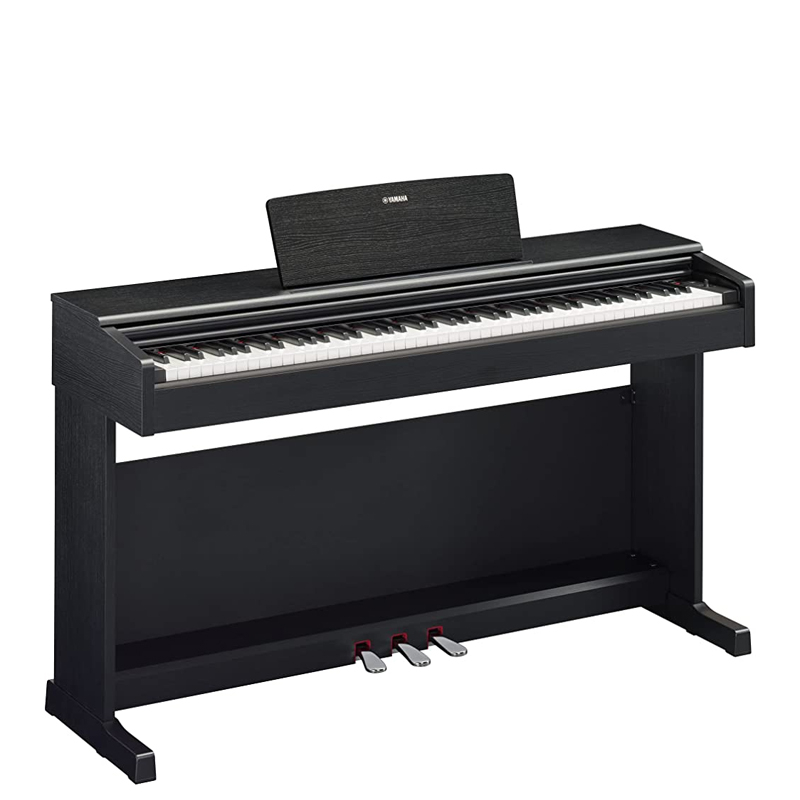
The successor to Yamaha’s incredibly successful Arius YDP-144, the YDP-145 delivers a stunning main piano sound derived from a real, top-of-the-line Yamaha CFX acoustic grand piano, mated to a brilliantly playable Graded Hammer Standard keyboard.
Best digital piano overall
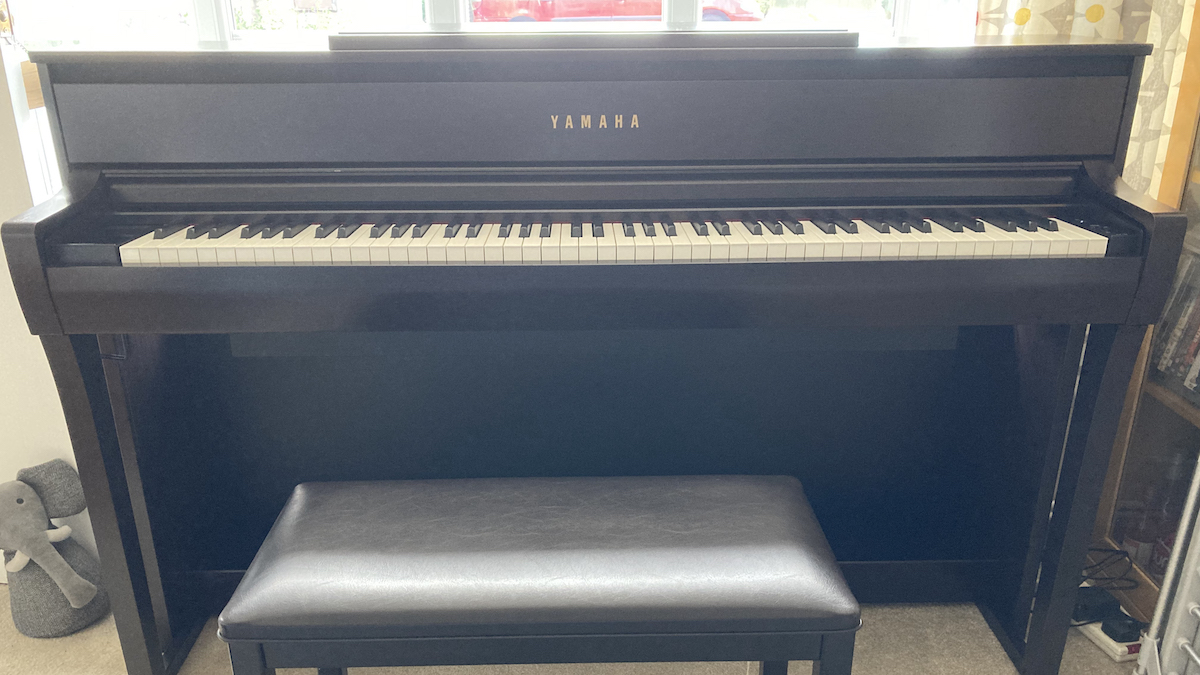
Specifications
Reasons to buy
Reasons to avoid
✅ Buy if you are looking for the ultimate family piano: The Clavinova CLP-775 looks the part and has the sound and playability to match. This piano will happily take pride of place in any home and is our pick for the best digital piano overall.
❌ Avoid for very young players: Yamaha pianos can have a heavier key action when compared to the likes of Casio and Roland, so it may not be the best option for very young kids.
The Clavinova range made its debut way back in 1983, and it’s fair to say that the technology has progressed significantly since then! While the original Clavinova digital pianos looked somewhat piano-like and sounded great for the time, the new 700 series is in a completely different league.
The groundbreaking 700 series features the latest technology developed by Yamaha to perfectly recreate the feel and sound of an acoustic piano. In our tests we found the GrandTouch key action with its Linear Graded Hammer emulation offers a truly authentic touch that will easily convert anyone sceptical of digital pianos.
As you’d expect, digital pianos offer a wealth of features that simply aren’t possible with a traditional acoustic piano. For example, the CLP-775 offers you the ability to connect your device via Bluetooth and play along with your favourite songs - or turn your piano into the best Bluetooth speaker in the house. You can also plug in a set of digital piano headphones, meaning the rest of your family doesn’t need to hear you attempt Für Elise one more time.
Looking for other options? Take a look at our guide to the best Yamaha digital pianos
| Test | Results | Score |
|---|---|---|
| Playability | Excellent key action - may be too heavy for kids | ★★★★★ |
| Sounds | Stunning tones | ★★★★★ |
| Features | Great features, includes touchscreen control and Bluetooth | ★★★★★ |

"If you're in the market for a high-quality, great-sounding digital piano for the home that's as close as you can get to the feel of an acoustic grand, I'd recommend the CLP-775 in a heartbeat." Read more: Yamaha Clavinova CLP-775
Best beginner piano
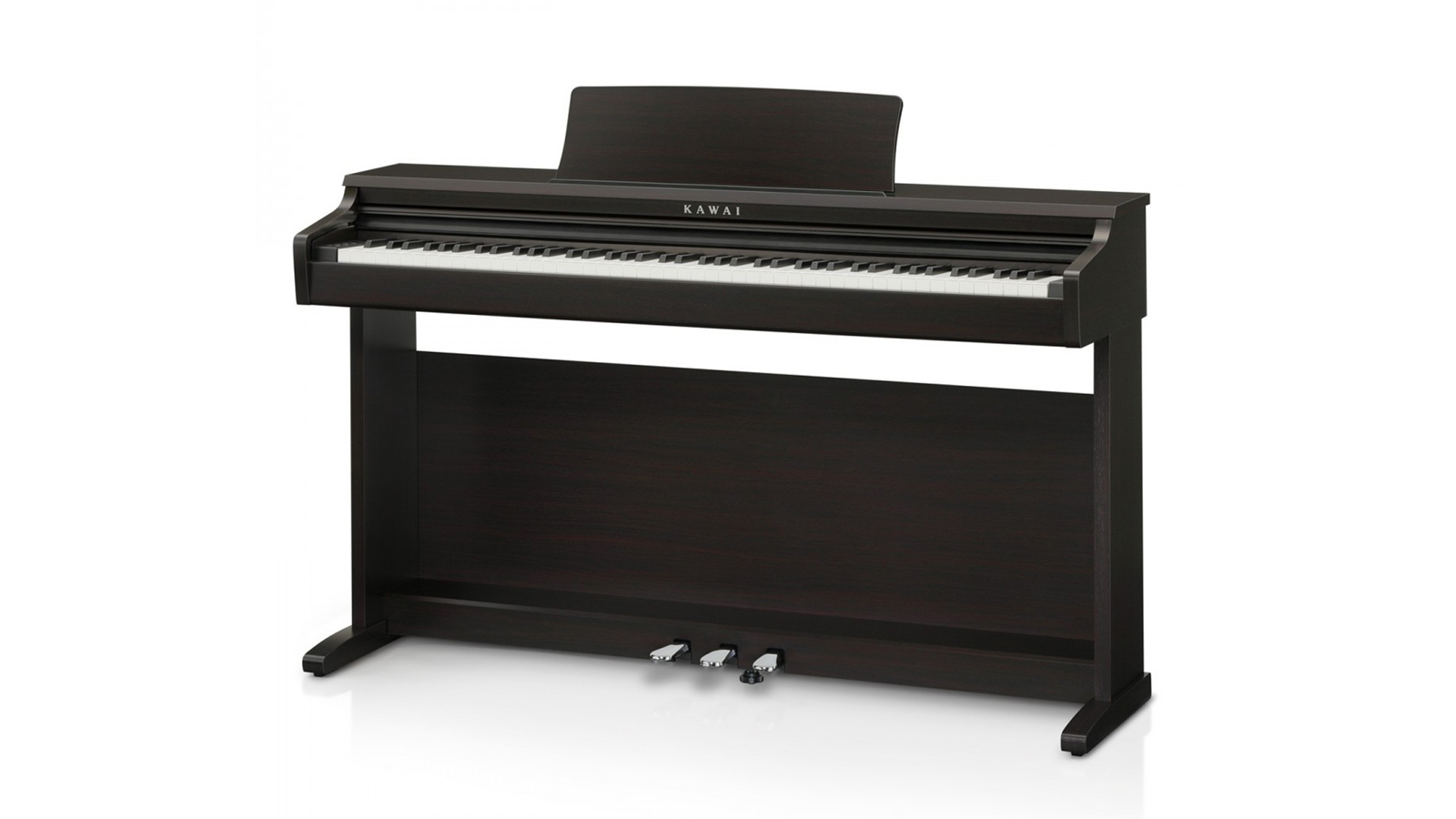
2. Kawai KDP120
Our expert review:
Specifications
Reasons to buy
Reasons to avoid
✅ Buy if you have limited space: This sleek piano from Kawai offers the great playability and sound of a digital upright but in a smaller format.
❌Avoid if you are seeking a realistic key action: For us, the KDP120 has a fairly basic key action when compared to the likes of Yamaha or Roland.
This sleek slimline digital piano is perfect for those looking to learn the piano but have limited space. The impressively small stature of the KDP120 still manages to deliver a rich, warm tone, mimicking the sound of the Shigeru Kawai SK-EX concert grand, while its 40W speakers - 20W per side - are more than enough for home practice.
Even though this digital piano may come with one of Kawai’s basic key actions - Responsive Hammer Compact II, to be exact - it still feels very responsive and enjoyable to play. This is the same action found on a few of Kawai’s portable options, so if you are familiar with those products, you’ll feel at home on this one.
While the KDP may fall into the bracket of “affordable digital piano”, it still comes loaded with the convenient features you’d expect from a digital piano. For example, you’ll be able to take advantage of various high-quality voices, which can be edited using the PianoRemote app and linking the two via the Bluetooth MIDI feature.
| Test | Results | Score |
|---|---|---|
| Playability | Beginner friendly action is good but basic | ★★★★☆ |
| Sounds | Good range of tones | ★★★★☆ |
| Features | Good features for the price - includes Bluetooth MIDI and PianoRemote app | ★★★★★ |
Best on a budget
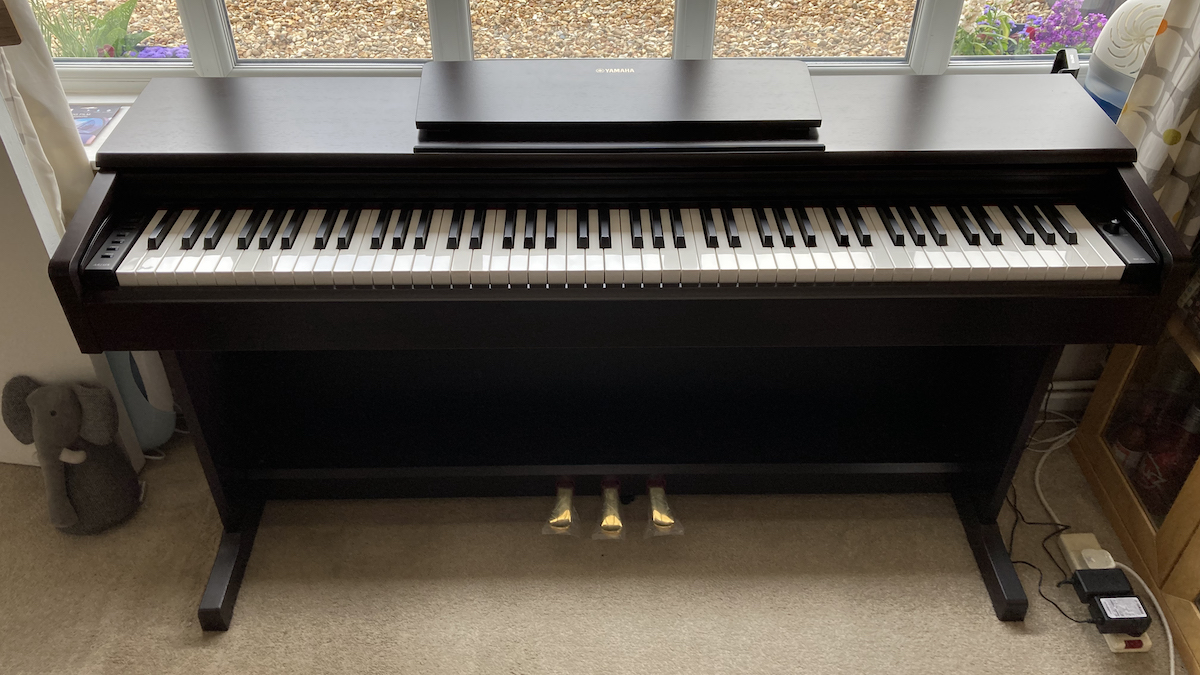
Specifications
Reasons to buy
Reasons to avoid
✅ Buy if you are looking for a reliable piano on a budget: For us, Yamaha makes some of the most reliable instruments in the world, and the YDP range proves you don't need to spend a fortune to get a dependable piano.
❌ Avoid if you need Bluetooth: Unfortunately, the YDP-145 doesn't have Bluetooth functionality.
Yamaha’s Arius range of digital pianos sits below the Clavinova range in terms of features and affordability, and as such is the number one choice for piano teachers, students or anybody else who wants a great-sounding, compact digital piano that isn’t going to break the bank or overwhelm the space in the room.
The successor to Yamaha’s incredibly successful Arius YDP-144, the YDP-145 is the cheaper of the two full-sized models in the range. The main reasons for the Arius’ popularity is a stunning main piano sound derived from a real, top-of-the-line Yamaha CFX acoustic grand piano, mated to a brilliantly playable Graded Hammer Standard keyboard. These were the two standout features in our tests.
There’s no Bluetooth on-board, and only 10 sounds to get to grips with, but you do get all the other essentials - an elegant sliding wooden keyboard cover, folding music desk, two headphone jacks and three pedals - in a choice of White, Rosewood & Black cabinets. Overall, the YDP-145 delivers the authentic piano experience you'd expect from Yamaha in spades.
| Test | Results | Score |
|---|---|---|
| Playability | Nice smooth playing action | ★★★★☆ |
| Sounds | Classic Yamaha sounds | ★★★★★ |
| Features | Lacks features | ★★★★☆ |

"I would have no hesitation recommending the Yamaha YDP-145 to anybody from beginners to students or seasoned pros who want a neat, unobtrusive and extremely enjoyable instrument from a legendary brand." Read more: Yamaha Arius YDP-145
Best for sounds
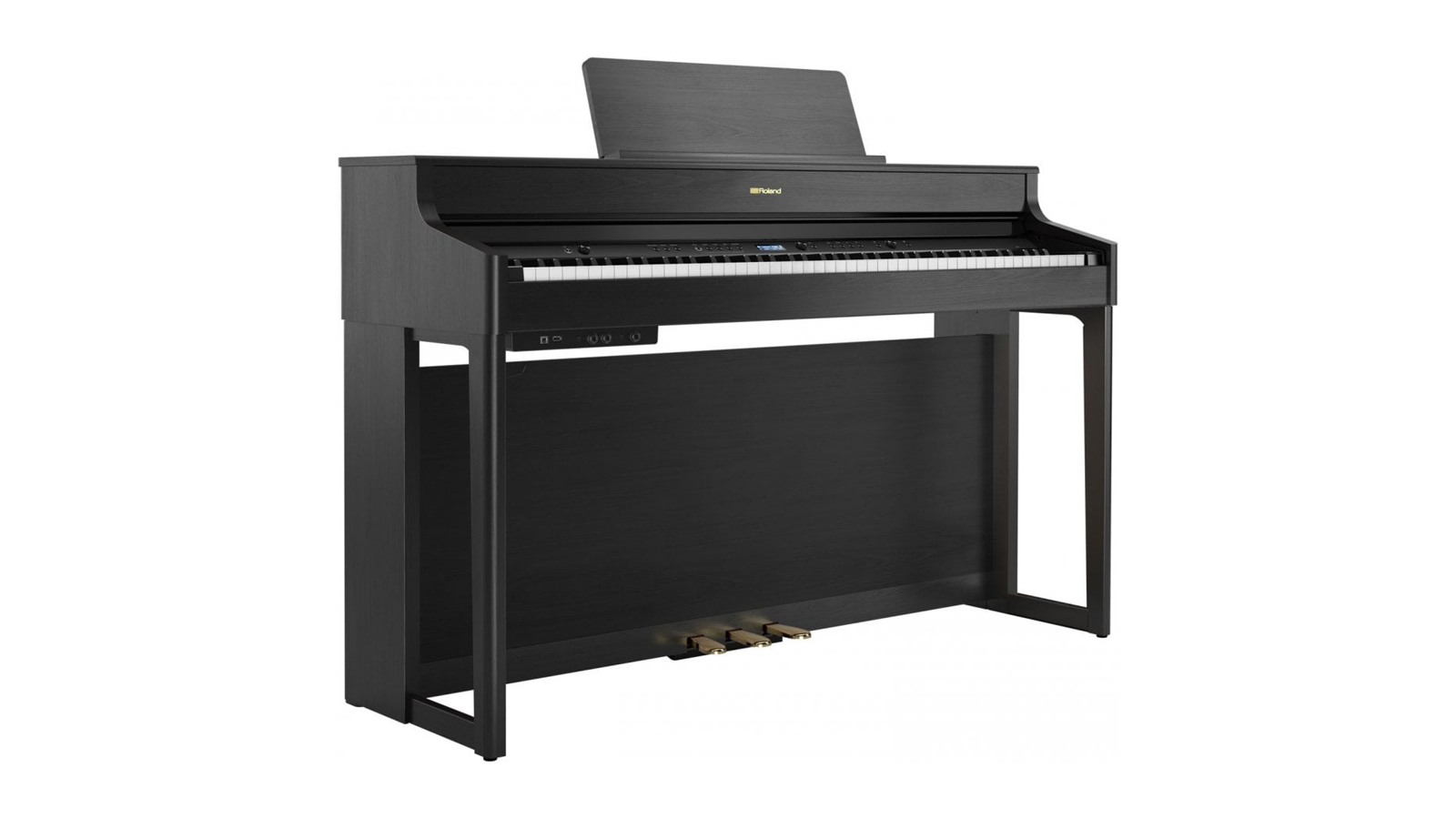
Specifications
Reasons to buy
Reasons to avoid
✅ Buy if you are looking for the best sound: This Roland piano comes loaded with an outstanding sound engine, making it one of the best-sounding pianos on this list.
❌ Avoid if you are tight on space: While this piano isn't the largest on this list, it's still fairly big. There are smaller Roland pianos available, so if you are tight on space, it may be worth checking out the F107.
If Roland is known for one thing - it’s their outstanding sounds, and the SuperNATURAL sound engine proves Roland knows how to replicate the complex sound of a piano. This incredibly sophisticated tone engine not only delivers fantastic piano sounds, but a whopping 324 voices, as well as limitless polyphony (when using piano category sounds).
It’s almost a given that it is going to sound great, it’s made by Roland, but how does it feel? Well, the PHA-4 Standard keyboard offers a great playing experience. The action isn’t as heavy as the Yamaha and isn’t as light as the Casio, so it’s perfect for players seeking the middle ground. The textured keys lend an extra level of authenticity and feel great under the fingers.
So if you’re looking for a terrific-sounding digital piano that won’t completely break the bank, then it’s worth considering the Roland HP702. Read our guide for more top choice Roland digital pianos.
| Test | Results | Score |
|---|---|---|
| Playability | PHA-4 Standard keyboard action | ★★★★☆ |
| Sounds | SuperNATURAL sound is engine is one of the best | ★★★★★ |
| Features | Bluetooth connectivity and Roland Piano app | ★★★★★ |

"If you want a great-sounding, cutting-edge digital piano with an elegant, traditional look and a great key action, the HP702 needs to be somewhere near the top of your list. Throw in compatibility with Bluetooth and the Roland Piano app for iOS and Android and you have a well-rounded and aesthetically pleasing product that makes an excellent musical centrepiece for your home, church or classroom." Read more: Roland HP702 review
Best hybrid

Specifications
Reasons to buy
Reasons to avoid
✅ Buy if you want a real hammer action: This stunning Casio piano features real hammers as part of its action, meaning it feels incredibly accurate to a real acoustic piano.
❌Avoid if you need Bluetooth: Unfortunately, the Celviano GP-310 doesn't have Bluetooth functionality.
Okay, so Casio might not be your first thought for a high-end digital piano, but the Celviano GP-310 may just be the most authentic option on this list. This beautiful piano utilises a real hammer action, which is built in conjunction with one of the most prestigious names in pianos, C. Bechstein - and even uses the same Austrian spruce.
We absolutely loved the tactile feedback of the hammers moving inside the body of the piano, as it's exactly what you come to expect from an acoustic piano. This feature ultimately leads to a more satisfying playing experience, that you don't get on other pianos on the market.
While this may not have as many sounds as others on this list, the included sounds are sublime. The three main piano voices - Berlin, Vienna and Hamburg - offer a trio of classic piano sounds perfect for almost any situation. So if you’re in the market for a digital piano with a truly authentic action, then do not overlook the Casio Celviano GP-310 Grand Hybrid.
| Test | Results | Score |
|---|---|---|
| Playability | Real hammer feel | ★★★★★ |
| Sounds | Great range of tones | ★★★★★ |
| Features | Lacks features | ★★★★☆ |

"Casio has done their homework enough to produce an instrument that responds and behaves like a grand piano when you play it, the opening lid and C Bechstein keyboard mechanism making this piano unique amongst its peers. The GP-310 is an extremely capable instrument that should reward pianists of all calibres hugely." Read more: Casio Celviano GP-310 Grand Hybrid
Best slimline
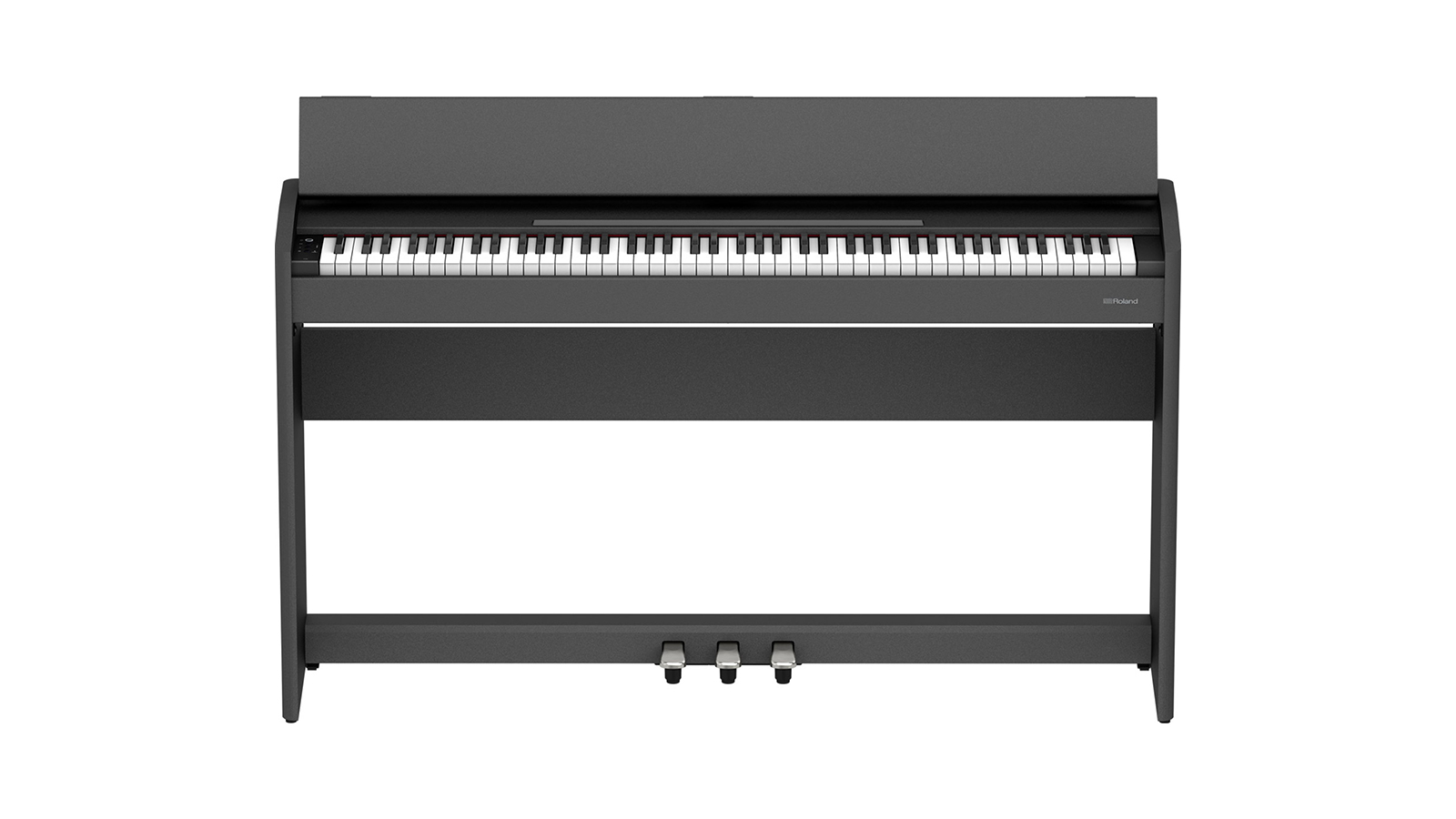
Specifications
Reasons to buy
Reasons to avoid
✅ Buy if you have limited space: The Roland F107 is ideal for small rooms, flats or student accommodation.
❌Avoid if you aren't interested in apps: For the best results we recommend using the piano with the Roland Piano app.
Okay, so pianos are large instruments, but not having the space for a bulky upright digital piano shouldn’t stop you from learning this glorious instrument. The Roland F107 presents you with the exact same key action - PHA-4 Standard - as the larger Roland HP-702 listed above, meaning you don’t have to compromise on the feel when downsizing the cabinet.
Not only is it the same key action, but the F107 also comes loaded with the same superNATURAL sound engine that makes the HP pianos so sought after, so you won’t need to compromise on the sound, either. We do have fewer voices here than the HP series, but let’s be fair, for this price point, it doesn’t really matter.
For us, the Roland F107 is a fantastic, compact, stylish and affordable instrument with a wonderfully playable keyboard and a simplified user interface - that said, we would say you need a great pair of headphones and the Roland Piano app for the best results.
| Test | Results | Score |
|---|---|---|
| Playability | PHA-4 Standard keybed | ★★★★☆ |
| Sounds | Great range of sounds but speakers not as good as HP702 | ★★★★☆ |
| Features | Bluetooth connectivity and Roland Piano app | ★★★★★ |

"The F107 is a compact, stylish and affordable instrument with a wonderfully playable keyboard, hampered by boxy speakers and an over-simplified user interface." Read more: Roland F107
Best for modern homes
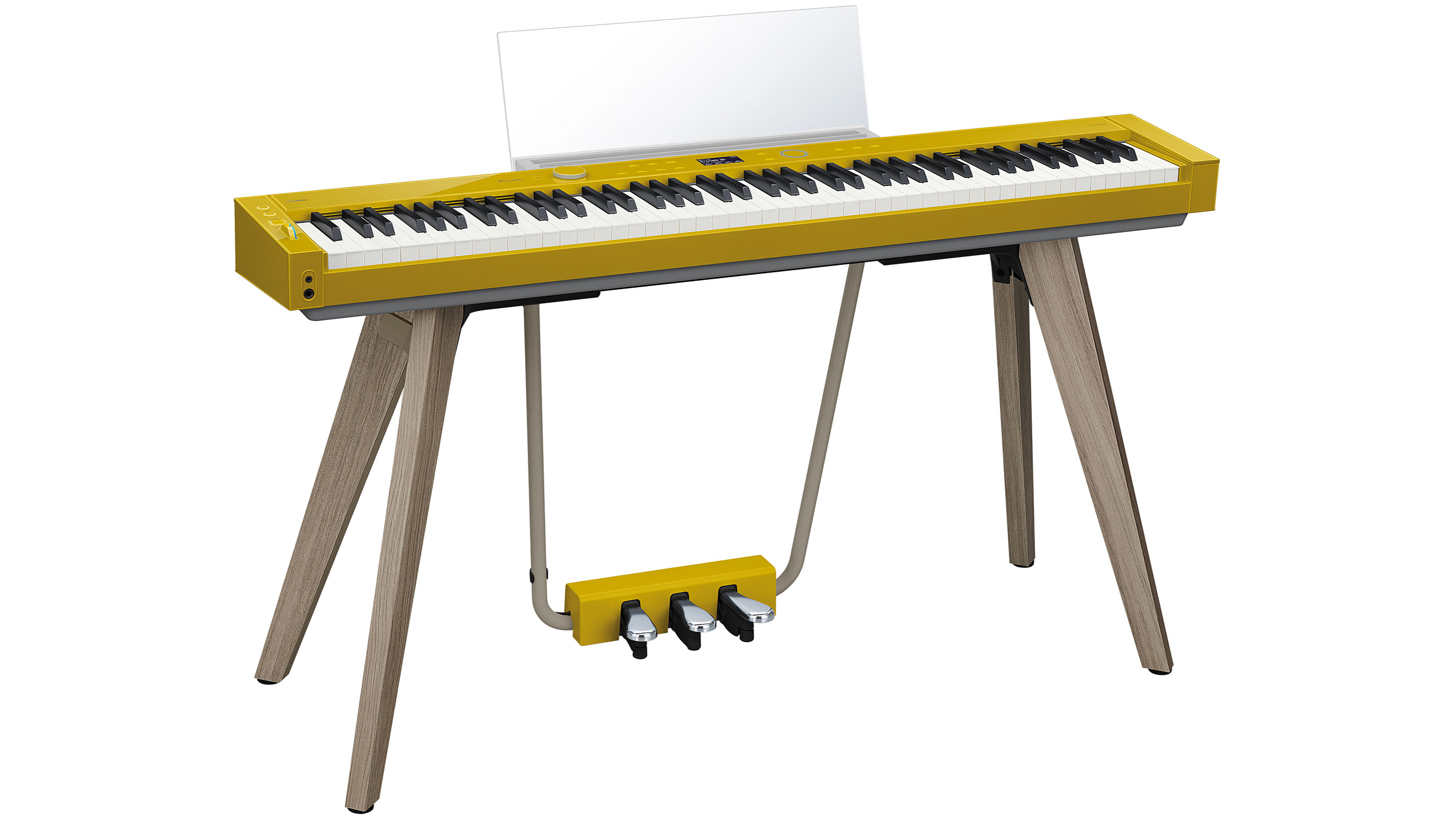
Specifications
Reasons to buy
Reasons to avoid
✅ Buy if you are seeking a modern piano: With a contemporary look and features this is the ultimate modern digital piano.
❌Avoid if you like traditional pianos: This piano's biggest strength is also its biggest weakness. The sleek modern design isn't for everyone and won't look good in every home.
Considering how many digital pianos are on the market, you’d think there would be more variation in the looks department. Unfortunately, most opt to mimic their acoustic counterparts, and while that works for most people, some players are looking for a stylish addition to their home as well as a playable instrument.
That’s where the new Casio PX-S7000 comes in. This sleek and modern instrument is designed to complement your room's decor and even comes in three finish options black, white and the rather striking Harmonious Mustard.
Now, it’s not all style over substance, as this piano more than delivers on playability and tone. Casio’s Smart Hybrid Hammer Action Keyboard feels incredibly responsive and offers a very satisfying playing experience, while the Multi-Dimensional Morphing AiR Sound Source delivers a massive range of tones.
| Test | Results | Score |
|---|---|---|
| Playability | Lightweight action | ★★★★☆ |
| Sounds | Good variety of sounds | ★★★★★ |
| Features | Needs WU-BT10 adaptor for Bluetooth connectivity | ★★★★☆ |
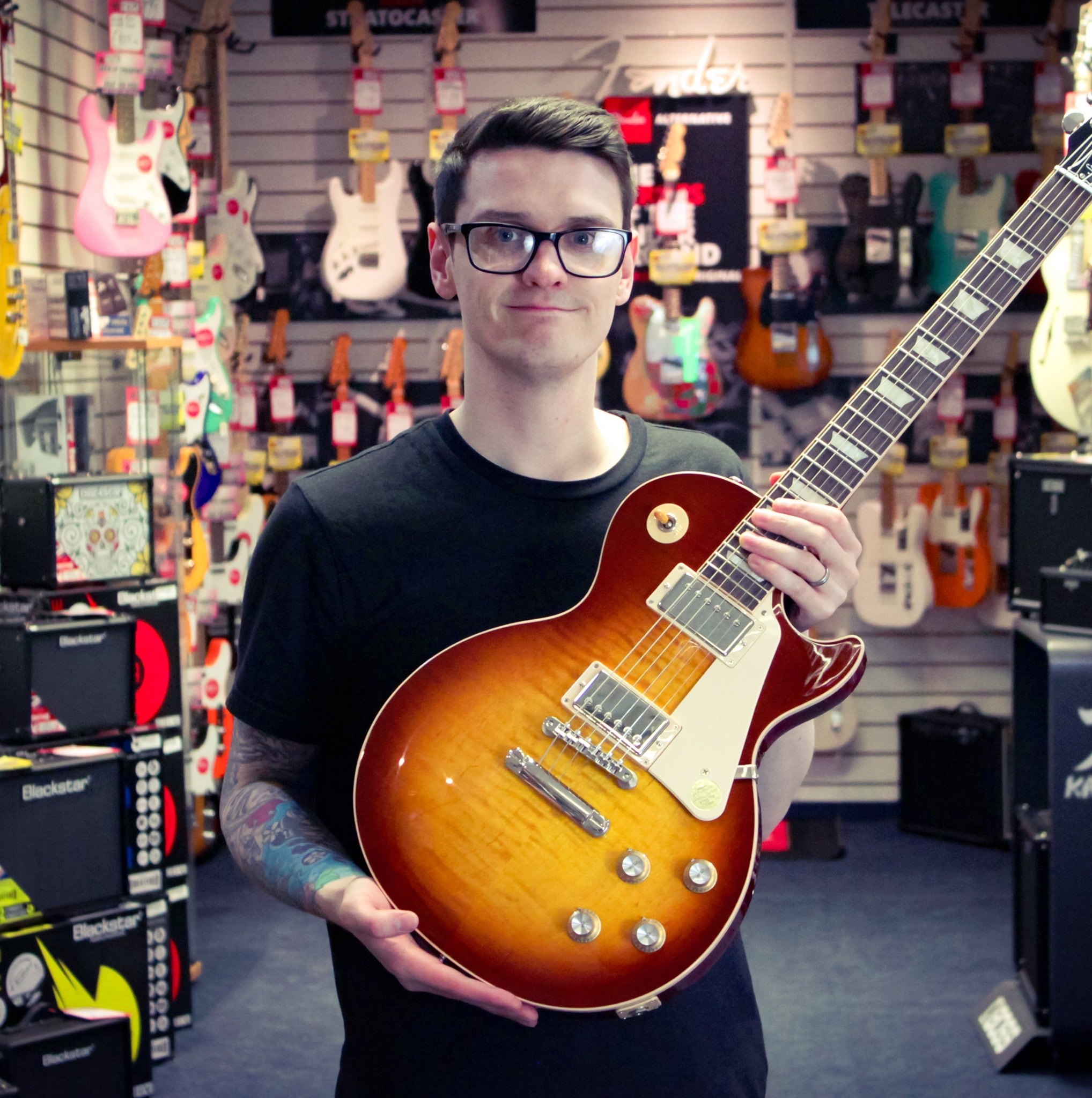
Casio clearly set out to make something different with the PX-S7000HM. This piano casts tradition aside, opting for an extremely stylish and modern look that just begs to be played. Luckily, Casio has the sound and playability to go with this bold new design. Read more: Casio PX-S7000HM review
Best for features
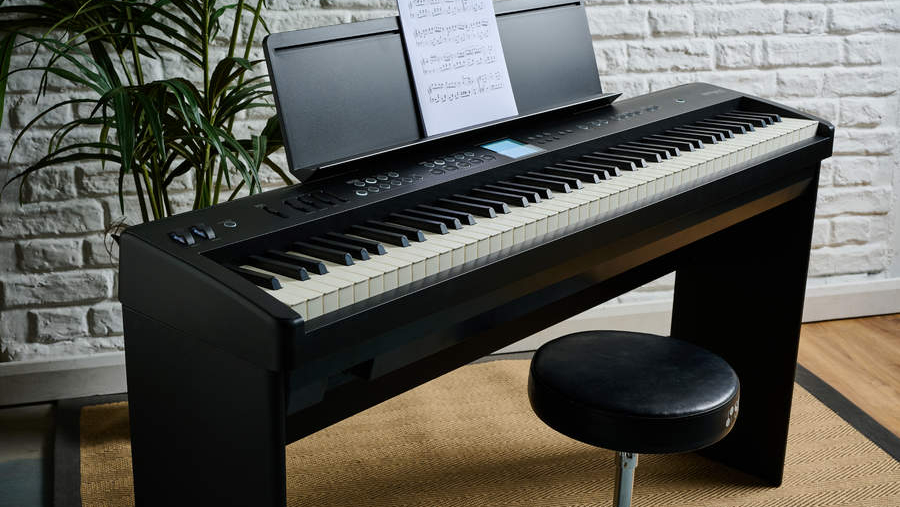
Specifications
Reasons to buy
Reasons to avoid
✅ Buy if you are seeking more than just a piano: With built-in synth sounds and arranger elements this is more than just a digital piano.
❌Avoid if you like things simple: This piano has so many features that it can feel a little overwhelming at times. If you are seeking a basic piano with a just a handful of very usable sounds, we'd suggest looking elsewhere.
From afar, the Roland FP-E50 may look like a reasonably standard digital piano, but get closer and you'll realise that it is way more than that.
The technologically advanced FP-E50 proves why Roland is at the top of their game, delivering an instrument just as comfortable as the home's main piano as it is a powerful synth or even an arranger keyboard.
But don't worry, it still very much feels like a digital piano. Featuring the beloved PHA-4 keybed - with Escapement and Ivory Feel keys - the FP-E50 will happily go toe-to-toe with any other piano on this list. At the same time, the SuperNATURAL Piano engine ensures it has a sound that matches its outstanding feel.
Read our full Roland FP-E50 review
| Test | Results | Score |
|---|---|---|
| Playability | PHA-4 keybed again | ★★★★☆ |
| Sounds | Stunning range of sounds | ★★★★★ |
| Features | More features than you'll ever need | ★★★★★ |

"Maybe not the coolest keyboard in Roland’s roster, but if you value sound quality, ease-of-use and fun, it’s in a class of its own." Read more: Roland FP-E50 review
Best under $1,000
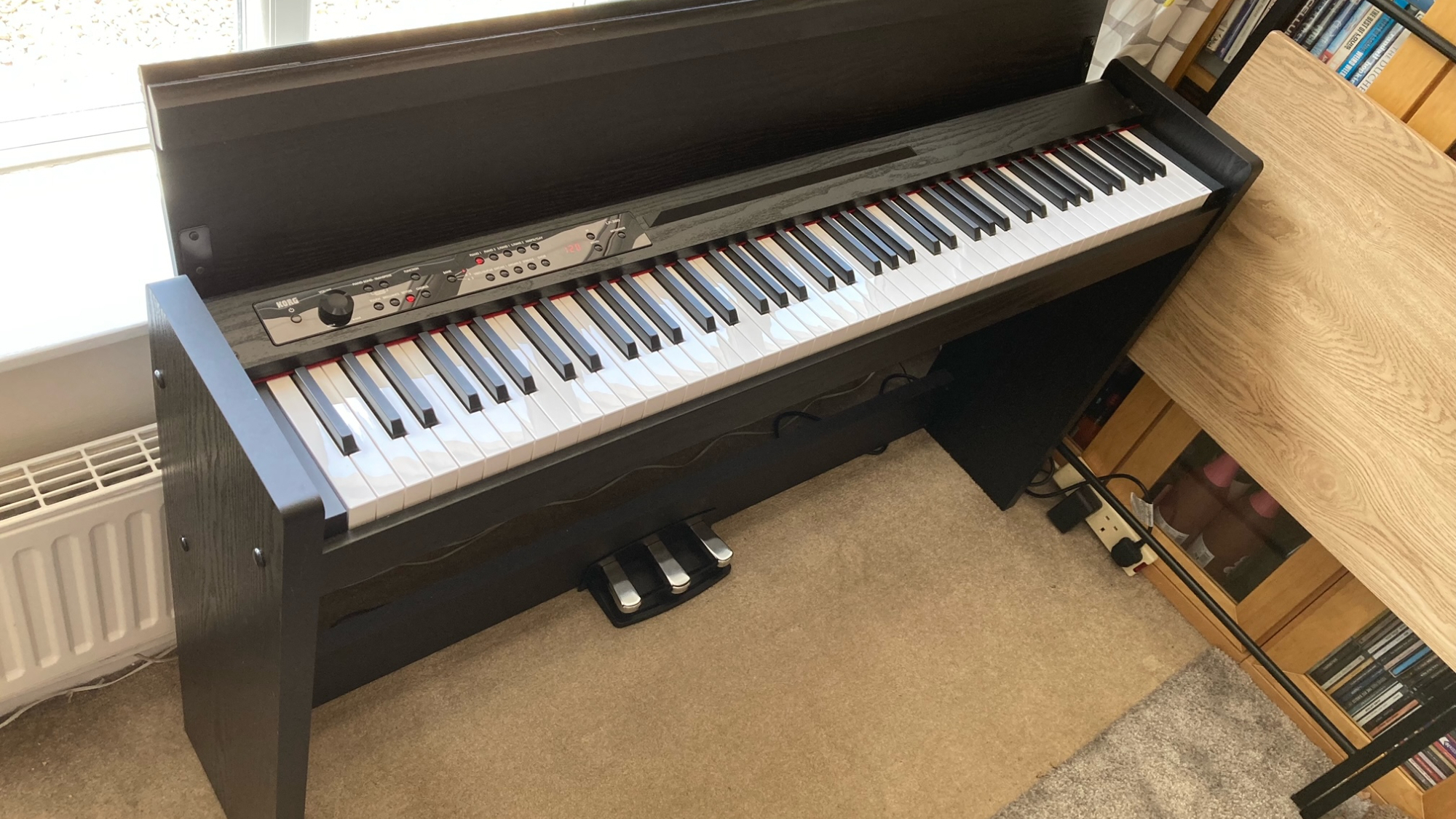
Specifications
Reasons to buy
Reasons to avoid
✅ Buy if you need a very shallow piano: With a depth of only 26cm, you won't find a piano much smaller than this. ❌Avoid if you are looking for a robust option: The plastic frame of this piano certainly looks nice, but it does feel a little cheap.
The Korg LP-380U has to be the slimmest option on this list, at only 26cm in-depth, meaning it can be squeezed into the smallest of spaces. Not only is it small, but with the lid closed, it will easily blend into its surroundings - looking more like a sideboard than a piano.
Housed inside this tiny cabinet is the acclaimed RH3 (Real Weighted Hammer Action 3) key action. This superb action is, in fact, graded, meaning all the weight of the keys changes as you move from the lower to the higher notes, just like a real piano. With the addition of the Key Touch Control, you can even select one of three sensitivity settings, so you can perfectly set the touch of the piano to your preference.
Overall the Korg LP-380U feels very robust and is actually made in Kyoto, Japan. This adds a level of quality not seen in other digital pianos of this style, and while we aren’t massive fans of the plastic base on the foot pedals, the rest of the piano feels top-notch.
| Test | Results | Score |
|---|---|---|
| Playability | The RH3 keybed is very nice under our fingers | ★★★★☆ |
| Sounds | The tone could be better | ★★★★☆ |
| Features | No Bluetooth or extra features | ★★★★☆ |

"All in all, the LP-380’s simplicity and ease of use is impressive. It appears to be an effective compromise between affordability, sound quality and depth of features. If all you need is an affordable, no-frills digital piano for the home that you can just switch on, set the volume and play without fuss, and that won’t take up too much space in your living room, the LP-380 more than has you covered, especially if you’re a fan of the Korg piano sound." Read more: Korg LP-380U
FAQs
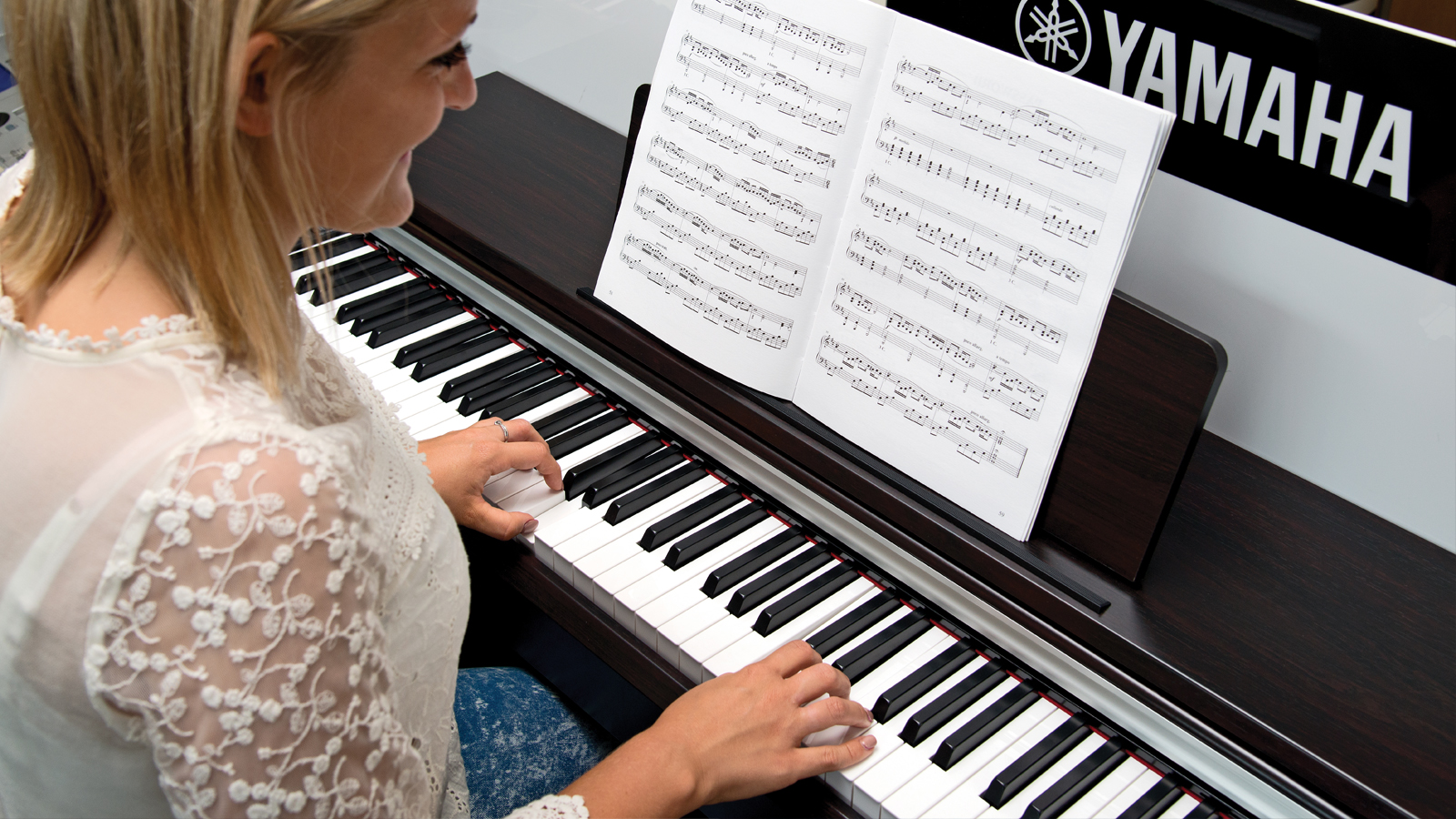
What are the benefits of choosing a digital piano?
Believe it or not, there are still some people out there who think that to learn the instrument “correctly”, you have to play an acoustic piano. While this outdated opinion may have been correct 20 years ago, the truth of the matter is, digital pianos have come a very long way since then, with some of the high-end models being indistinguishable from the real thing.
The most obvious positives are digital pianos don’t have to be tuned - saving a lot of money over the lifetime of the instrument - and are way easier to move around!
Going digital opens players - new and old - to a whole host of features you simply can’t get from an acoustic instrument. From headphone outputs for silent practice, built-in metronomes to help you keep the beat, on-board recorders for tracking progress and a slew of different tones, these state-of-the-art instruments can make learning the piano fun and more engaging.
What's more, many digital pianos can be hooked up to a computer or tablet via a cable or Bluetooth connection (or sometimes both) and used as a MIDI controller or for interacting with online lessons. Read our guide to connecting a digital piano to a computer to find out how.
How to choose the best digital piano for you
MusicRadar's got your back
First and foremost, you need to consider the size of your space. Digital pianos come in various shapes and sizes, from slimline units that will most likely fit in any room to upright pianos that look just like the real thing. So, measure the space before you make a purchase.
Next, you need to think about the key action. This is how heavy - or light - the keys feel to play. Now, there are no rules here, pick an action that feels right to you. If you feel more comfortable on a piano with a light touch, that’s fine. At the end of the day, the more comfortable you feel, the more you’ll play!
Lastly, consider extra features. You may want a digital piano with built-in Bluetooth to connect to your smart device, or perhaps you need two headphone outputs for lessons. Each piano brand offers a unique set of features, so make sure you look into these before you buy.
Want to know more? We answer common digital piano queries in our digital piano FAQ.
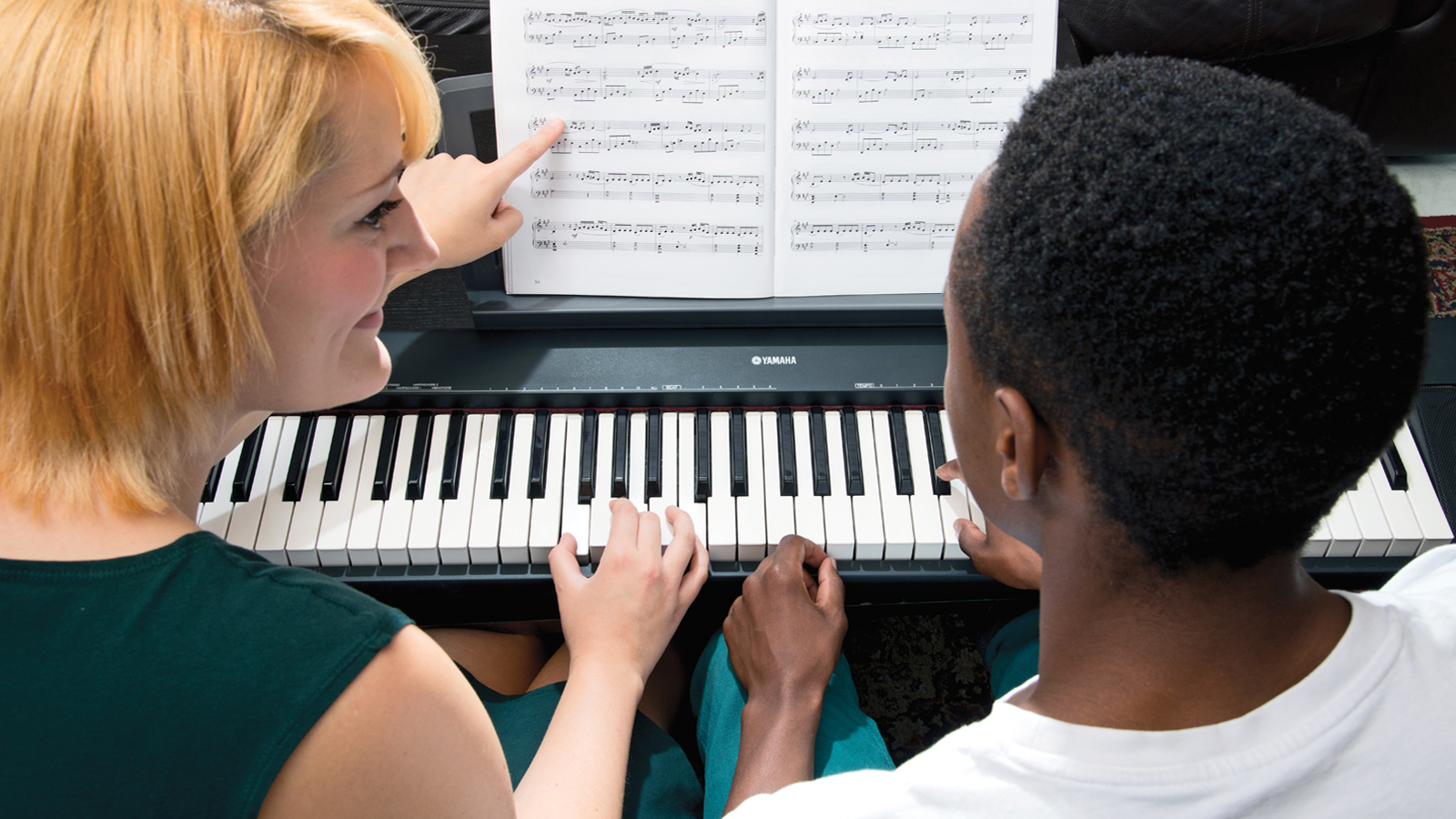
Should I order a digital piano online?
For some people, the thought of buying a piano online terrifies them. Well, really, it shouldn’t. Yes, pianos are bulky items, but most - reputable - retailers have services in place for delivering and sometimes building your new piano, although this can cost extra.
So what can you expect when your shiny new piano arrives at the door? Well, it should go without saying that the boxes the pianos come in can be rather large, so it’s worth making sure you have some help to get the box in the house. Most digital pianos can be moved with two people, but a third person won’t hurt if you are worried.
Once you’ve successfully navigated your way inside with the piano, the next part is very straightforward. The pianos come flat-packed and are a breeze to build - it’s just like putting together flat-pack furniture. You aren’t actually building the entire piano, only the legs and pedalboard. So there really isn’t anything to be put off by. Again though - like assembling a set of drawers - it’s best to have a helping hand as it will make life easier.
Find out more in our guide to ordering a piano online.
How much should I spend on a digital piano?
As you can see from this guide, a digital piano can vary wildly in price, with very basic options starting in the hundreds and premium, all-singing-all-dancing instruments costing thousands. Now, how much you decide to pay, will largely come down to the features you want, how accurate you want the key action to be, and lastly, what aesthetic you are looking for.
At the beginner end of the spectrum, there is a decent level of choice, with budget brands such as Donner, Thomann, and Gear4Music producing entry-level instruments for under $/£500. However, you’ll have noticed that we have not recommended any of these products in this guide, as we strongly believe that, if you pay a little more - $/£500+ - you’ll bag a much better instrument. This price range grants you access to very respectable pianos from Yamaha, Casio and Korg, and frankly, the build quality of these instruments is far superior when compared to the likes of the budget brands. For more information on cheaper pianos, be sure to check out our guide to the best digital pianos under $1,000/£1,000.
For intermediates and pros, you’ll be looking at a piano in the thousands, with the average being around $/£2,000. At this price point, you don’t just get an instrument but a piece of furniture that will become the focal point of any room. Pianos in this category will offer the most authentic key action and, therefore, feel indistinguishable from their acoustic counterparts. Again Yamaha, Roland, Korg, Casio and Kawai all offer absolutely stunning pianos for this budget, in various styles.
Lastly, if you want a baby grand or full-size grand, you’ll pay considerably more. Baby grands start from around $/£4,000, with the larger grand pianos setting you back $/£8,000+.
What accessories do I need for my digital piano?
When you purchase a digital piano, there are a few accessories you mustn’t forget to add to your basket. The first - and most obvious - is a piano bench. Now, most pianos won’t come with one as standard, so unless you want to stand like a young Elton John, you’ll want to make sure you pick one up. There are a bunch of different stools on the market, from benches with added storage, height-adjustable options and small foldable variations. So take time to think about which would best suit your needs. If you’re not sure, you can always check out our guide to the best piano benches for more advice.
Next up is a set of headphones. Obviously, one of the benefits of going digital is the ability to practice in silence, and a great quality set of headphones will ensure you hear your new piano in all its glory. Again, there are many different styles available to you, with both open and closed back options having their advantages. So if you’re not sure what cans are best for you, check out our guide to the best headphones for digital piano.
If you want to do further reading into must-have items for piano, then be sure to check out our essential piano accessories guide, where we go into more detail.
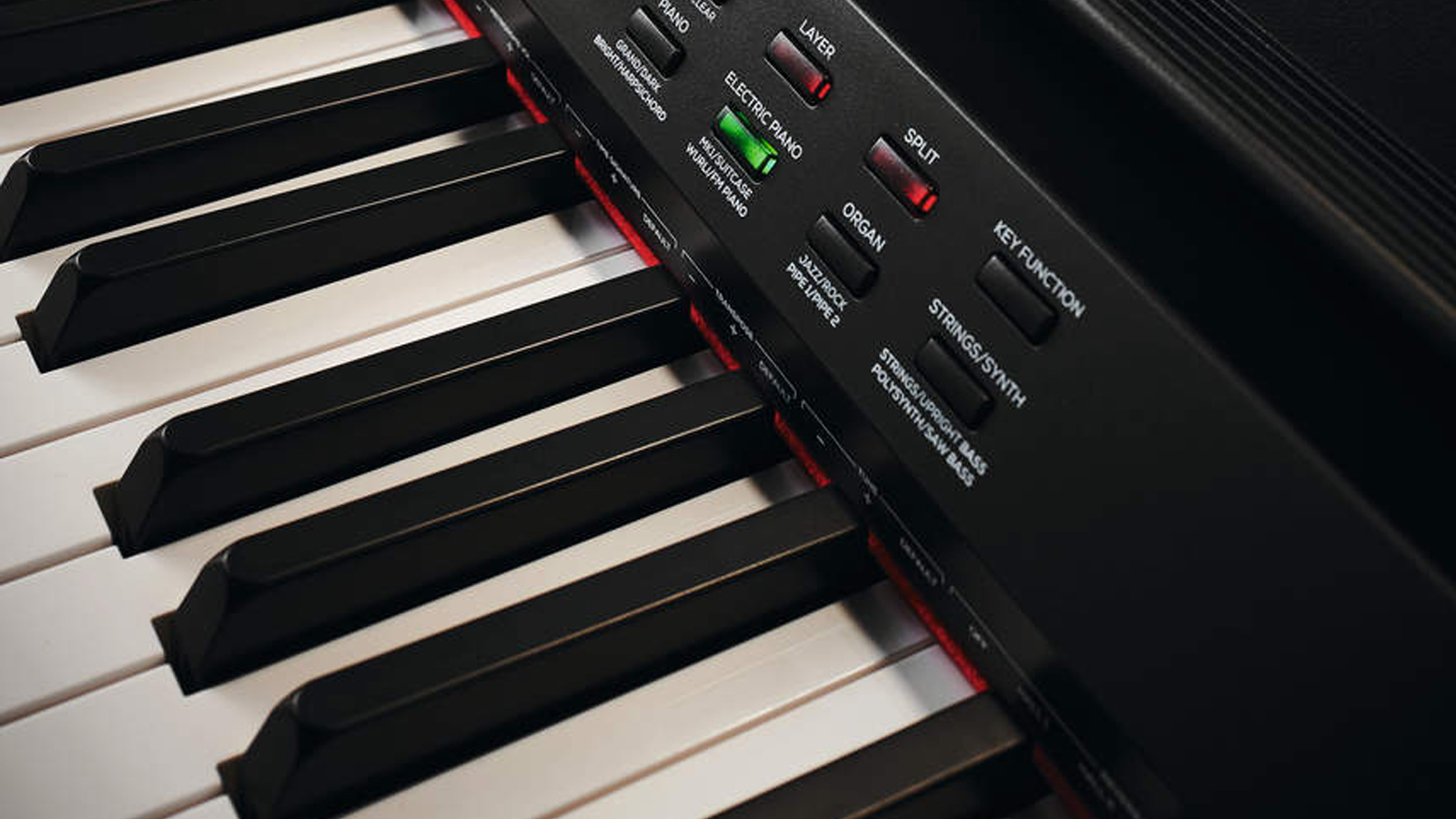
What do the 3 pedals on a digital piano do?
A modern digital piano typically has three pedals, which are located at the base of the instrument. These pedals are designed to mimic the effects of the trio of pedals found on a traditional acoustic piano.
Damper pedal: This rightmost pedal is the damper pedal, often known as the sustain pedal. Pressing down on this pedal lifts the dampers from the strings inside the piano, allowing them to vibrate freely. This creates a sustained sound that continues even after you release the keys. Of course, there are no dampers to lift in a digital piano, so the sustain is created virtually.
This is easily the most used out of the three pedals, and for stage pianos with only one pedal, it is typically the only one included.
Soft pedal: This is the leftmost pedal, and it is also known as the una corda pedal. When pressed, the soft pedal shifts the position of the hammers inside so they only strike one or two strings per key instead of the usual three.
This creates a softer and more muted sound, which is especially useful for playing quietly or creating a more delicate, nuanced sound. Some digital pianos also have a half-pedal function, which allows you to vary the degree of softness depending on how far down you press the pedal.
Sostenuto pedal: The sostenuto pedal sits in the middle of the other two and is probably the pedal that causes the most confusion. When pressed, this pedal sustains only the notes that are being held down at that exact moment. This allows you to play new unsustained notes over the original sustained ones. The sostenuto pedal is not used as frequently as the damper and soft pedals, but a few classical pieces take advantage of its unique sound.
Overall, the three pedals on a modern digital piano allow you to create a wide range of dynamic and expressive sounds, just like on a traditional acoustic piano and if you want to unlock the full potential of your instrument and create music that is both beautiful and nuanced, you’ll want to get to grips with what each of them do.
Meet the experts

☑️ Established 2007
☑️ 2.9 million monthly users globally
☑️ 9,500+ reviews on-site
With more than 17 years of experience, MusicRadar is the premier music-making website in the world. Run by musicians for musicians, we offer expertly written gear round-ups and high-quality, authoritative reviews by an extensive team of highly experienced industry professionals.
Below you'll find more information on the expert authors of this guide.

Daryl is a Senior Deals Writer at MusicRadar, and is responsible for writing and maintaining buyer's guides on the site as well as testing out products for reviews. Before writing for MusicRadar, Daryl worked for many years in music retail, helping musicians of all ages find the best gear for them. Whether it was a beginner's first keyboard or a top-of-the-range digital piano for the pros, Daryl was there to help steer players in the right direction.

Dave is an expert in all things keys, from beginner keyboards, to digital pianos, synths and beyond, and has been a music technology writer and product tester since 2007, contributing to the likes of Computer Music, iCreate, MusicRadar and Attack Magazine. Dave has also programmed and played keys on recordings by a range of world-renowned artists including George Michael, Kylie and Gary Barlow.
How we test digital pianos

It's essential that we put the instruments through several tests to ensure they are worthy of being included in this guide to the best digital pianos. There are so many digital pianos on the market, and only the instruments we rate highly will make it on the list.
When we receive a digital piano for review, we start by asking ourselves the following questions:
- How easy is the piano to play?
- Are the sounds inspiring and varied?
- Is the unit easy to navigate without reaching for the manual?
- Is the digital piano well-made and robust?
- And does the piano offer the user good value for money?
Below you'll find a more detail of our testing criteria.
Playability: The first test - and most important for us - is how the piano feels to play. This is, of course, a combination of the key action as well as the feel of the physical key. To test the key action, we'll first play the piano at various dynamics - and musical styles - to see how the instrument responds. A good digital piano should feel as close to an acoustic piano as possible and most definitely not like a keyboard.
This goes hand in hand with the texture of the keys themselves. The best digital pianos go out of their way to recreate the feel of real ivory and ebony, resulting in a more authentic playing experience.
Sound quality: Next up is the sound. We will carefully go through the list of inbuilt voices while paying close attention to the frequency range of the speakers. A real piano produces a massive range of tones, from extreme lows to fierce highs, and while a digital can't recreate this perfectly, we should be getting close with today's technology. It's also important to try the piano via headphones, as this is how many players will practice.
Features: Next, we will go through any extras included with the piano. The pedals, audio outputs, MIDI compatibility and any accompanying app are all tested to see how they compare to the rest on the market at the respective price points.
Build quality: Of course, we need to examine the piano's overall build quality. It's crucial for the instrument to exude a sense of robustness and solid construction. We also look for pianos to be easy to build and put together.
Value: When evaluating a piano, the last part of the equation is value for money. It's not just about the features and performance but also about whether it's worth the price. We'll carefully combine our thoughts on all the above sections - from design and functionality to performance and sound - and weigh them against the digital piano's price to determine if we think it's worth the investment.
Read more about how we test music-making gear and services at MusicRadar.
Recent updates
Recent updates
21/11/24: We've added a dedicated Black Friday advice section to showcase the amazing Black Friday offers we've found from around the internet.
29/10/24: We have added expert verdicts to the end of each product entry so you can better understand our choices.
29/07/24: To make sure this guide is as up-to-date as possible, a full audit of the product list was conducted. We truly believe that the digital pianos featured are the very best on the market right now, so you can shop with confidence. 10/06/24: We've reviewed the guide, removed discontinued products, and added more depth to our testing methodology.
Related buyer's guides
- Get started with the best digital pianos for beginners
- Best stage pianos: the finest keyboards for live performance
- 10 of the best pianists of all time
- 8 great beginner piano songs to learn
- How to clean you piano keys, step-by-step
Get the MusicRadar Newsletter
Want all the hottest music and gear news, reviews, deals, features and more, direct to your inbox? Sign up here.

I'm a Senior Deals Writer at MusicRadar, and I'm responsible for writing and maintaining buyer's guides on the site - but that's not all I do. As part of my role, I also scour the internet for the best deals I can find on gear and get hands-on with the products for reviews. My gear reviews have been published in prominent publications, including Total Guitar and Future Music magazine, as well as Guitar World.com. I've also had the privilege of interviewing everyone from Slash to Yungblud, as well as members of Sum 41, Foo Fighters, The Offspring, Fever 333 and many more.
I have a massive passion for anything that makes a sound, particularly guitars, pianos, and recording equipment. In a previous life, I worked in music retail, giving advice on all aspects of music creation and selling everything from digital pianos to electric guitars, entire PA systems, and ukuleles. I'm also a fully qualified sound engineer who holds a first-class Bachelor's degree in Creative Sound Production from the University of Abertay and I have plenty of experience working in various venues around Scotland.
MusicRadar deals of the week: Enjoy a mind-blowing $600 off a full-fat Gibson Les Paul, £500 off Kirk Hammett's Epiphone Greeny, and so much more
“For those who think they know Joel’s story, as well as those who are not as familiar, I believe this two-part film is both a revelation and a surprise”: New Billy Joel doc is on the way